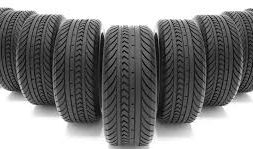Car ownership can be an easy or hard task depending on just how much you know about a car in general. In fact, many car owners are usually surprised at just how little their knowledge of the machine they are hauling on the road is when they find themselves in an unfortunate situation on the road and the their mechanic is suddenly out of reach.
It is usually at this point when it also dawns on you that the nearest service station is a considerable number of miles away from where you are stuck. This is the point in time when you need to summon all the knowledge you might have about cars to figure out what could be wrong before making any decision.
Let’s start by assuming that the problem is something to do with tires of the vehicle. What are some of the basic issues that any car owner needs to be familiar with? What can you do, and where do you start? Well, here is the down low.
A tire is basically the rubber part that surrounds the wheel and provides essential cushioning between the road and the vehicle. The function performed by the tires is very closely related to that provided by the springs but more pronounced. They help to immensely reduce transmission of shocks from the road to the car. However, the most important function is perhaps the provision of friction that actually allows the vehicle to move on the road and also perform other important functions. In a nutshell, your car will not move without the friction provided by the car; now you know why you need to replace your tires on a regular basis.
There are two main types of tire constructions in the market today:
a. Cross-ply
b. Radial
Radial tires are commonly used on passenger vehicles, 4-wheel drives and heavy vehicles. The criss-crossed cords of the cross-play tires are ideal for lighter vehicles.
Tires can also be classified as tubeless or tube tires. A tubed tire is basically composed of the outer thick rubber and an inner tube to tightly seal the air inside the tire. On the other hand, a tubeless tire consists of an assembly of completely air tight tire thereby eliminating the need for a tube; a specially designed valve that can effectively hold in the air is critical in this case. The entire construction can either be held in position using sealing washers and nuts or the tight fit of the tire onto the rim.
In a nutshell, the specifications to look out for in a tire include the rim size, aspect ratio, maximum speed and load allowable, the type of tire construction and in some cases, the manufacturer’s name.
All this information can be found on the markings present on the side of the tire. It is important to make a good selection of a tire to avoid unnecessary breakdowns.





